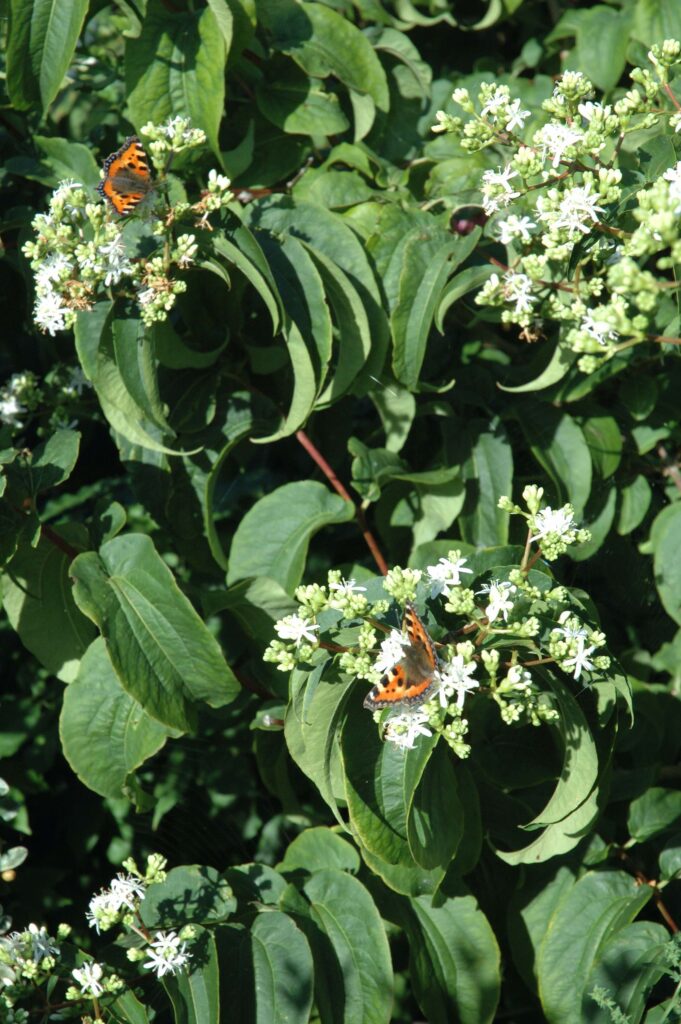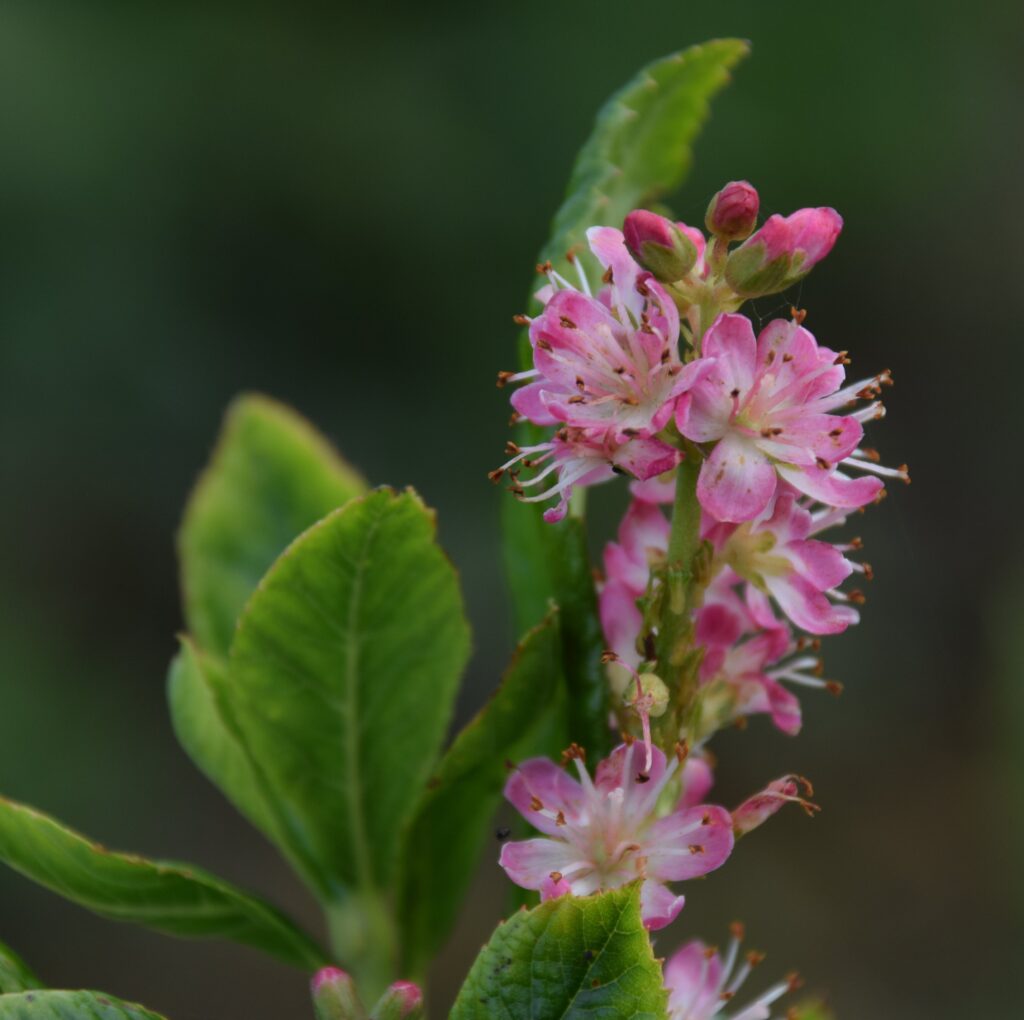
August can find the garden looking a bit the worse for wear, especially after a hot, dry summer. And it looks like it will be warm again this week.
There are relatively few shrubs that bloom in August. Of course, roses should still be blooming if we keep them watered, fed and deadheaded. Hydrangeas and hardy hibiscus are notable for late summer colour and are among the most beautiful and spectacular of all hardy shrubs.
But there are a few others that deserve consideration and this week I am going to give some a moment in the spot light. They are all plants I have in my garden and I chose them not just because they are in bloom in August but because they are fragrant and are great to attract butterflies. At the moment the garden is filled with butterflies; not just the pretty, but subtle, gatekeepers and ringlets but the more spectacular peacocks, red admirals and painted ladies. The most visited plants are, of course, the buddleias and tall, mauve verbena, but this year a plant that has taken a few years to settle down is finally flowering and has been by far their favourite plant in the garden.
Cephalanthus (or button bush) is not a common plant but it has many fine qualities. It is hardy, blooms in August and, the key point for the site where I planted it, it tolerates wet soil. So adapted is it to wet landscapes that in the wild (in North America) the fruits are eaten by ducks! As a garden plant it is neat and slightly nondescript but the pompons of tubular, cream flowers are pretty and the fruits should be reddish. The wild plant can get large but mine is ‘Sugarshack‘ which should only get to about 1.5m high. If it gets too big it can be pruned in spring and still flower that summer.
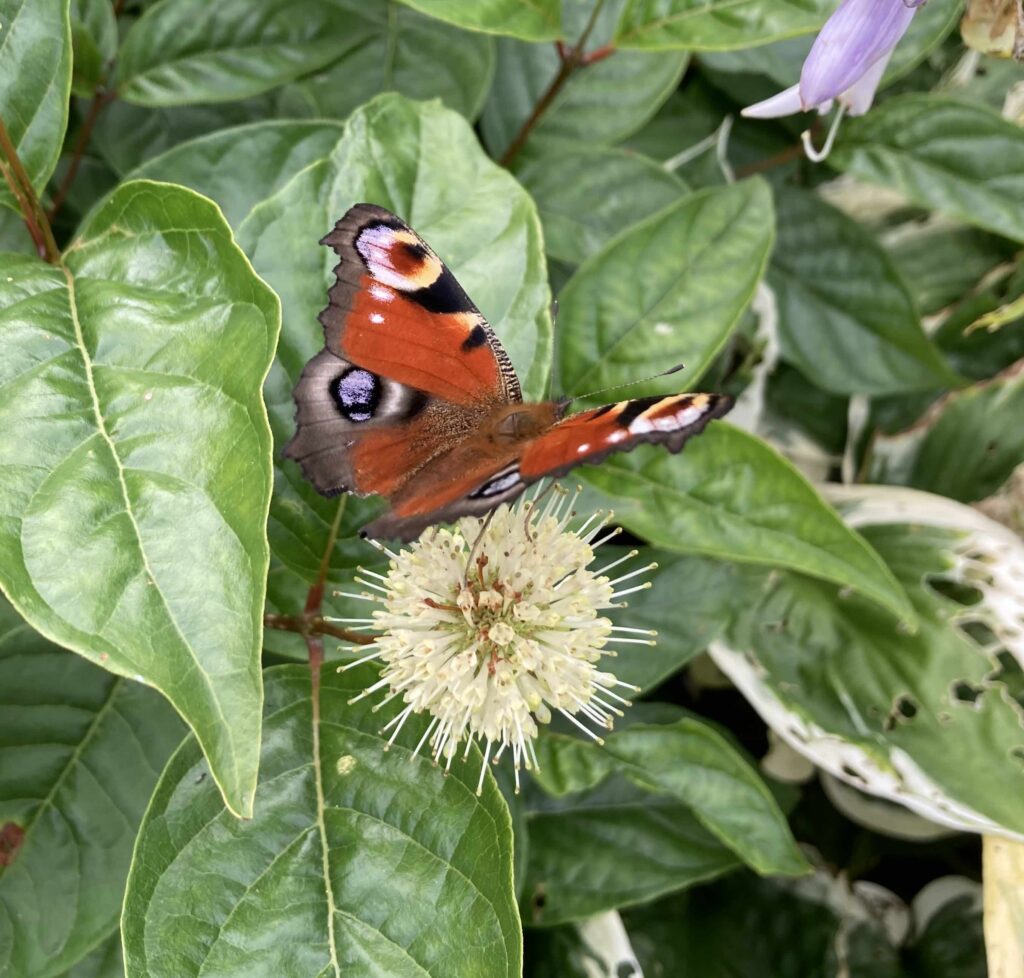
It flowers for several weeks and the blooms have a slight, pleasant perfume. My plant struggled a little to establish because the site is rather wet clay, but after two years it is growing well and is currently covered in butterflies. I would recommend it for the shrub border, especially if you have wet, heavy soil.
Another group of plants that I like – and am adding new ones every year – are clethras. These deciduous, useful shrubs are distantly related to heathers but you would not really know. They do have a slight liking for acid soils but can cope with all except very alkaline (chalky) soils. All have spikes of small, very sweetly fragrant flowers, usually creamy white but some are pink. The leaves of most turn good yellow in autumn.
‘Pink Spice’ (top photo) is possibly the best but there are lots more. All are loved by bees and butterflies.
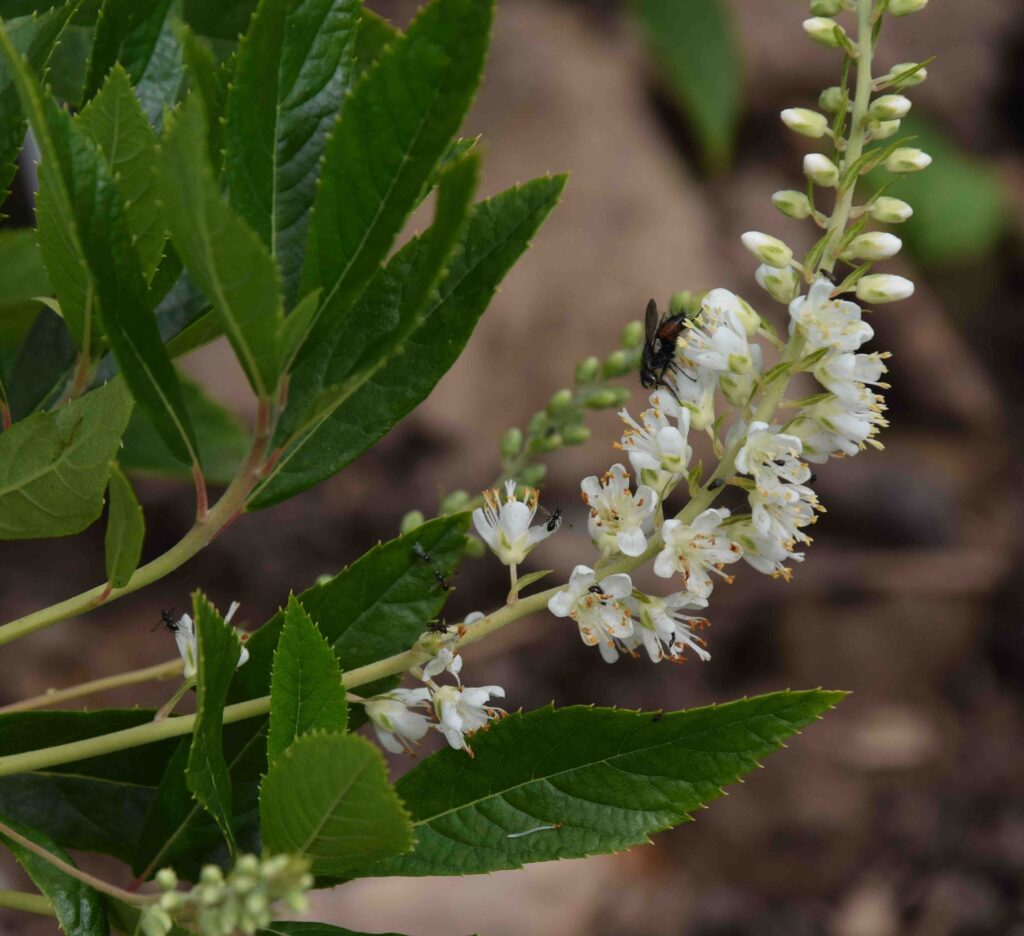
Clethra fargesii is rather uncommon but has long flower spikes.
Rather similar flowers, but on a much larger scale, are produced by Aesculus parviflora, a rather special horse chestnut. Instead of becoming a tree it makes a large, wide bush, about 3m high when mature. It also produces suckers and it is often recomended as a ‘lawn specimen’ where it would look a lot better than a pampas grass! It has typical ‘horse chestnut’ leaves but has long, ‘bottlebrush’ flowersheads. After three years my small plant is finally blooming and I am excited to see it thriving. Give it sun and plenty of room. It casts light shade so can be underplanted with hardy geraniums or other low ground cover.
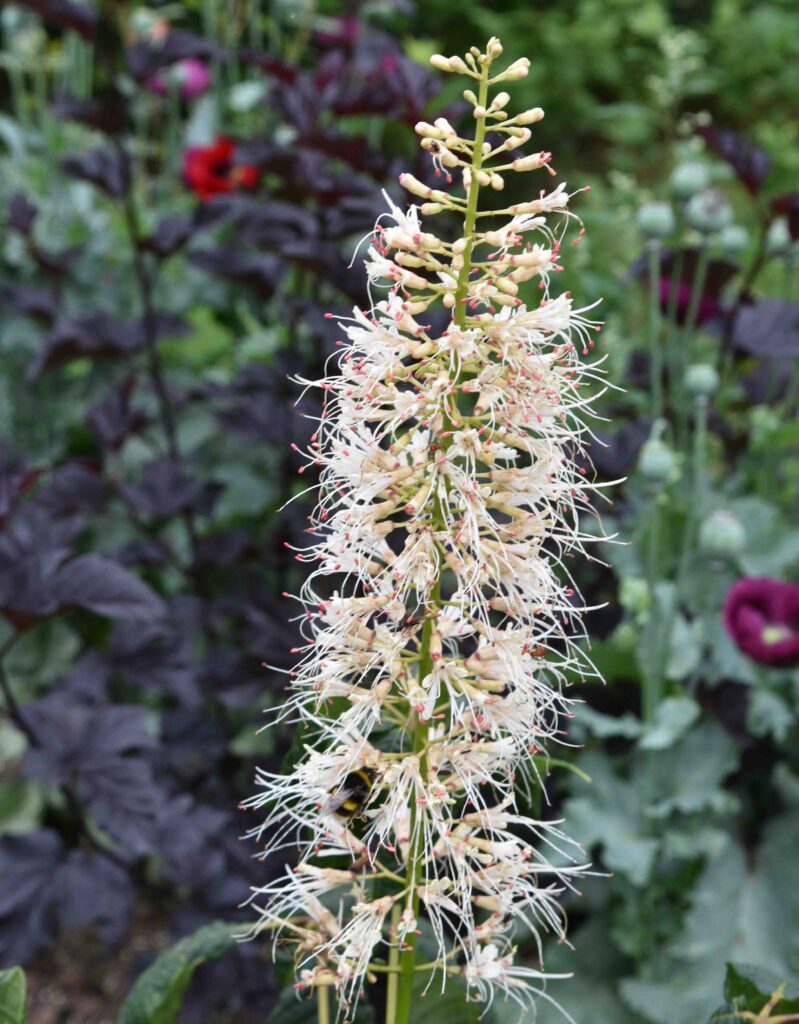
My favourite early autumn shrub also suckers but rather more vigorously and in light soil it can send up shoots more than a metre away. Clerodendrum bungeii acts rather like an herbaceous plant and the old stems can be cut back to the base in spring – they often die back in winter. The upright, often unbranched stems carry large, heart shaped leaves, covered in purple hairs. When bruised they smell rather unpleasant. But every stem, which can reach about 1.5m high, carries a domed head of gorgeous, vivid pink flowers, with a heady scent. Wonderful!
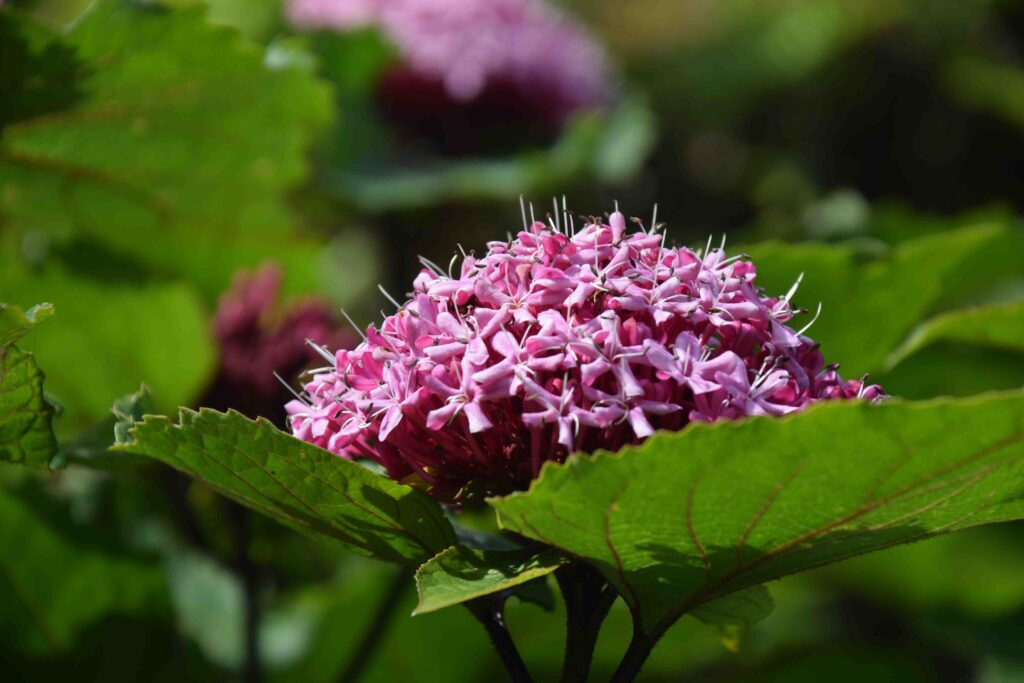
It needs a bright, warm spot but is not fussy about soil. Just be prepared for it to wander, especially in light, sandy soil. ‘Pink Diamond’ is a variegated kind that is less vigorous.
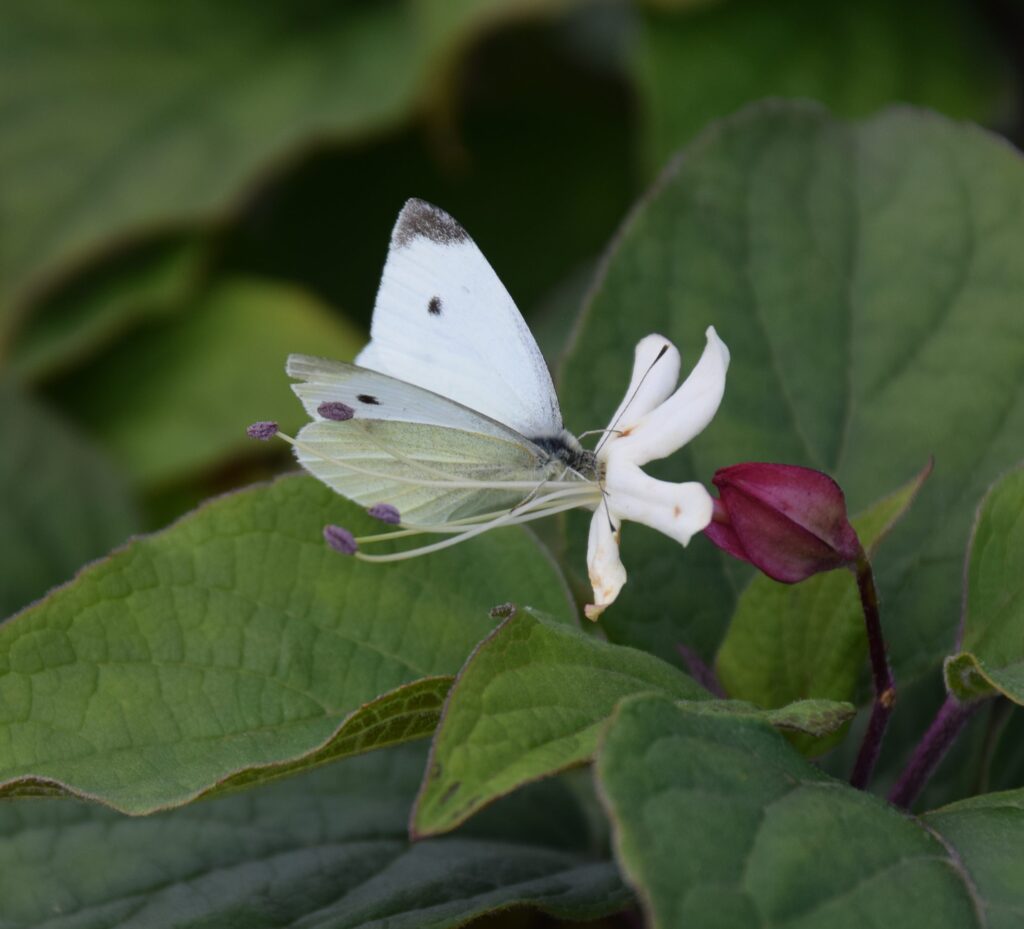
The other common garden clerodendrum is C. trichotomum. This really is special and makes a low, spreading tree in time, ideal for a small, urban garden. It needs light soil and a warm, sunny spot (mine is in rather heavy soil and part shade and is not really happy but still grows and flowers). The purple-tinged leaves also smell rather unpleasant but the starry, white flowers are heavily scented and quite beautiful. When they fade they are replaced by turquoise berries set in ruby red calyces – visually tasteless but magnificent. My own plant rarely sets these berries because my climate is cool but in Surrey there should be no issue. There are variegated forms of this too.
I will end with one of my favourite shrubs of all, Heptacodium. It is not usually in bloom till September so I won’t go into detail here but it is one of the most remarkable of all large hardy shrubs, loved by butterflies and one of the first shrubs I planted here. Look out for it!
